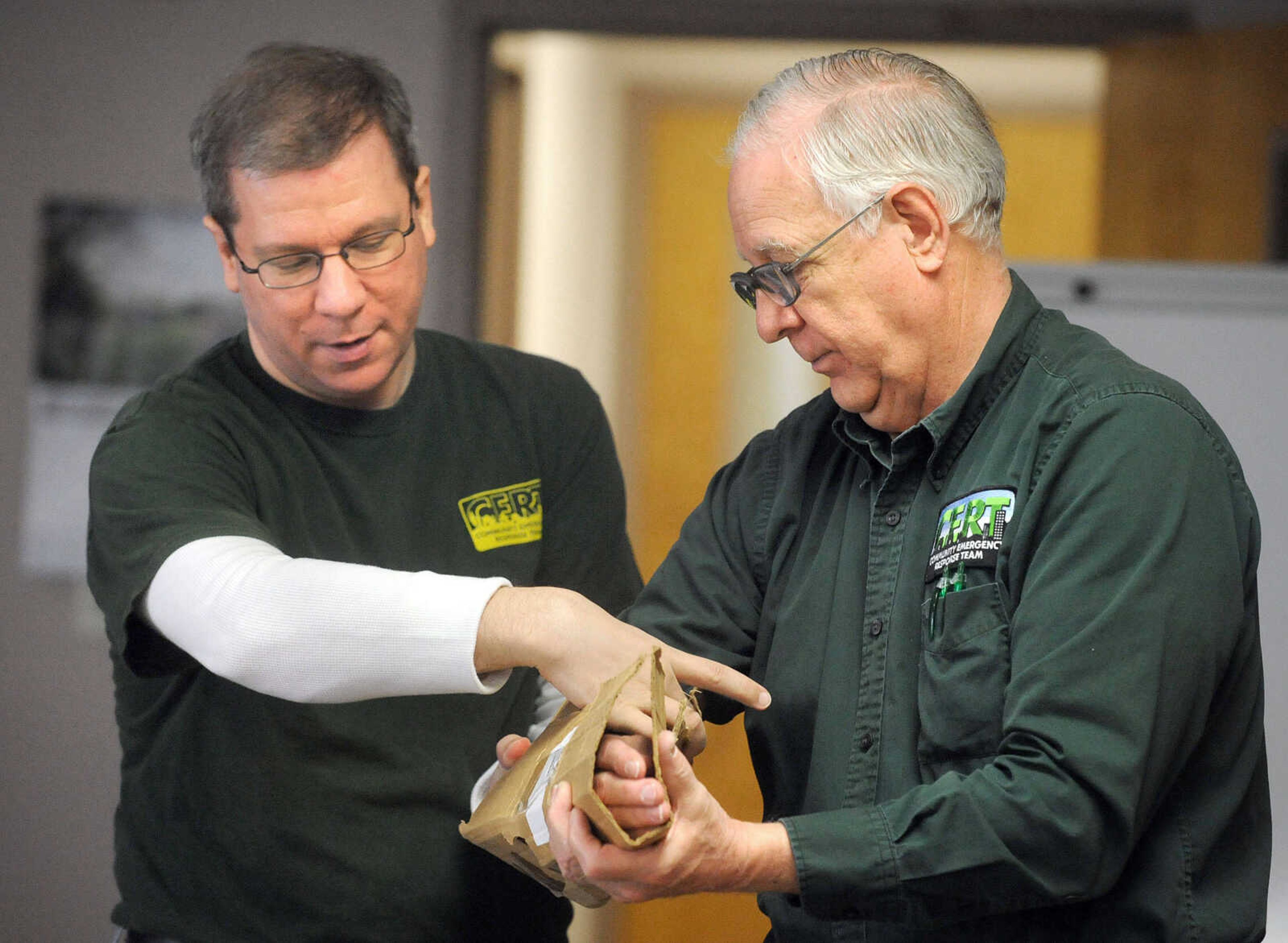How to form a disaster plan, stock an emergency kit for your home or business
Does your family have a safe meeting place in case of a house fire? Does everyone know where to seek shelter from a tornado or earthquake? Most Americans say disaster preparedness is important to them, but only about 17 percent say they are actually prepared for such a situation, according to an Ad Council survey...
Does your family have a safe meeting place in case of a house fire? Does everyone know where to seek shelter from a tornado or earthquake? Most Americans say disaster preparedness is important to them, but only about 17 percent say they are actually prepared for such a situation, according to an Ad Council survey.
"When an emergency happens, it's too late to try to get things together," says Jim Watkins, Community Emergency Response Team (CERT) training coordinator with the Cape Girardeau Fire Department. Watkins works in 13 Southeast Missouri counties to train residents in everything from fire suppression and first aid to disaster psychology and search and rescue. A disaster is not a time to "wing it," he says, and he urges all families and individuals to prepare an emergency kit and draft -- and practice -- an emergency plan.
"The better our plans and preparedness and kits, the quicker we are able to recover after a disaster, and the less stressful it will be for all of us," adds Jamie Koehler, disaster program manager with the American Red Cross -- Southeast Missouri Chapter. "And the more prepared we are as individuals, the less of a burden we place on community resources -- that way they can focus on true emergencies."
Here are five steps to make sure you're prepared for a disaster:
__1: Identify potential hazards.__ In Southeast Missouri, we are prone to fires, tornadoes, flooding and earthquakes, says Koehler. Due to our location near the Mississippi River, railroads and pipelines, we should also consider hazardous materials and transportation events, she says.
__2: Come up with an emergency plan.__ "Once you identify the hazards that are likely to happen, look at the house and make plans for each and every room," says Koehler. For example, call everyone into the family room and ask how they would escape if there was a fire, where they would "drop and cover" in case of an earthquake and where they would seek shelter from a tornado. Repeat this in other areas of the house.
Make sure your family has a safe meeting place outdoors near the home, and another meeting place in a different part of town in case it's not safe to return to your neighborhood.
You'll need a communication plan -- Koehler suggests having one friend or family member designated to listen for the phone and make sure everyone is accounted for in a disaster. She also recommends having a second person to call on out of state in case the phone lines and networks are unavailable in your community.
"Texting could be very, very important after a disaster -- make sure every family member knows how text," she adds. Texting puts less strain on the phone battery and operates on a different network than phone calls and data plans.
Watkins emphasizes the need to involve all family members in planning for an emergency, including kids. "It does take a family involvement because sometimes the children may be there by themselves," he says. "If you're going to run to the store and be gone 10 minutes, a lot can happen in 10 minutes. You should involve children very early in planning."
__3: Practice your plan.__ You'll never know your emergency plan works unless you try it, says Watkins, so practice tornado and fire drills at home, just like you would at work or school. Koehler suggests having family meetings at the start of each season to go over the hazards that are more likely -- tornadoes in the spring, ice storms in the winter -- and how to handle them.
__4: Stock your emergency kit.__ Necessities include nonperishable foods and water (a gallon or two per person per day), a first aid kit, tarps, duct tape, tools, flashlights and batteries, a radio, leather work gloves, trash bags, unscented bleach to sanitize water, a whistle, space blankets, copies of important documents (like Social Security cards, credit cards, driver's licenses, prescriptions and insurance papers), and a change of clothes and shoes.
You may need to include extra items depending on your family's needs, says Koehler -- think bottles and formula for the baby, hearing aids and batteries for grandma or extra pet food and a muzzle for your pet.
As for storage, both Koehler and Watkins recommend having multiple kits, or storing parts of the kit in different areas, like the car, shed, basement and a closet near the front or back door.
"That way, no mater what's damaged, something will be accessible," says Koehler.
Watkins likes to store emergency supplies in duffel bags, backpacks and five-gallon buckets -- in a worst-case scenario, he explains, a bucket can be emptied and used as a commode.
__5: Update and review your plan and kit.__ Again, Koehler says it's important for families to meet a few times a year to review the emergency plan and sort through the emergency kit.
"No one's kit is ever really done. It's a constantly evolving project," she says. "You need to check for expired things, and things may need to be pulled out or added in -- as your family changes and grows, your kit needs to change also."
Connect with the Southeast Missourian Newsroom:
For corrections to this story or other insights for the editor, click here. To submit a letter to the editor, click here. To learn about the Southeast Missourian’s AI Policy, click here.










